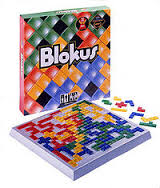We play games in therapy for many different reasons. The game may serve as a reinforcement, as a basis for social skills training, or as a teaching mechanism itself.
Choosing the wrong game is a nightmare for the student and therapist. Games with complex rules, multiple pieces, easy cheating factor, and long play time will not work. Many board/box games from toy retailers or therapy suppliers fall into that difficult category.
The game of Chutes and Ladders is the quintessential example. The board is whimsical and appealing but those arrows can get anyone confused. Right or left, it is always hard to discern. Not to mention the small boxes and the issues when multiple kids are in one box. Then someone shakes the board and the game is a mess. And when students ‘cheat’ there is no way to prove it and a spirited argument ensues between the players.
Choosing games may be even more difficult for students with ASD. They often gravitate towards the IPAD for games and work. As communication facilitators we must ask ourselves if this is the most effective modality for teaching communication? Should we allow this comfortable retreat into a ‘technological trance’ during or session? Perhaps if we provide them with tactilly and visually appealing games and activites then we can keep them focused enough to perform.
Below are some games that provide sensory feedback for the players. The game pieces and parts are stimulating and enjoyable to hold and feel. They provide the perfect backdrop for calm learning. The game rules are not very complex, and do not be afraid to simplify the rules if you need to.






These games provide sensory feedback for students with ASD. These games are likely to increase their engagement and attention to their environment.
***However, make sure that the students DoNot place pieces in their mouths.

